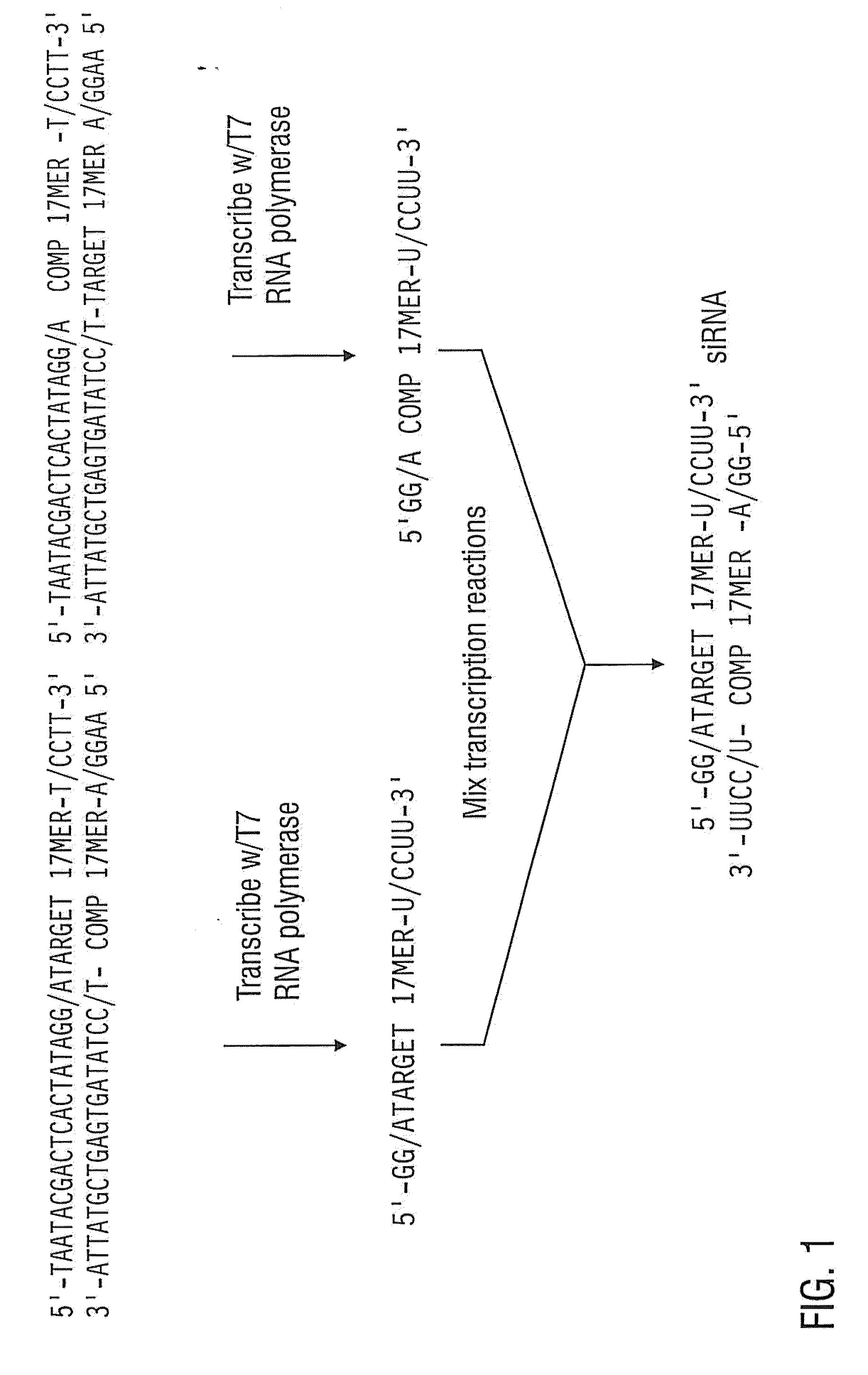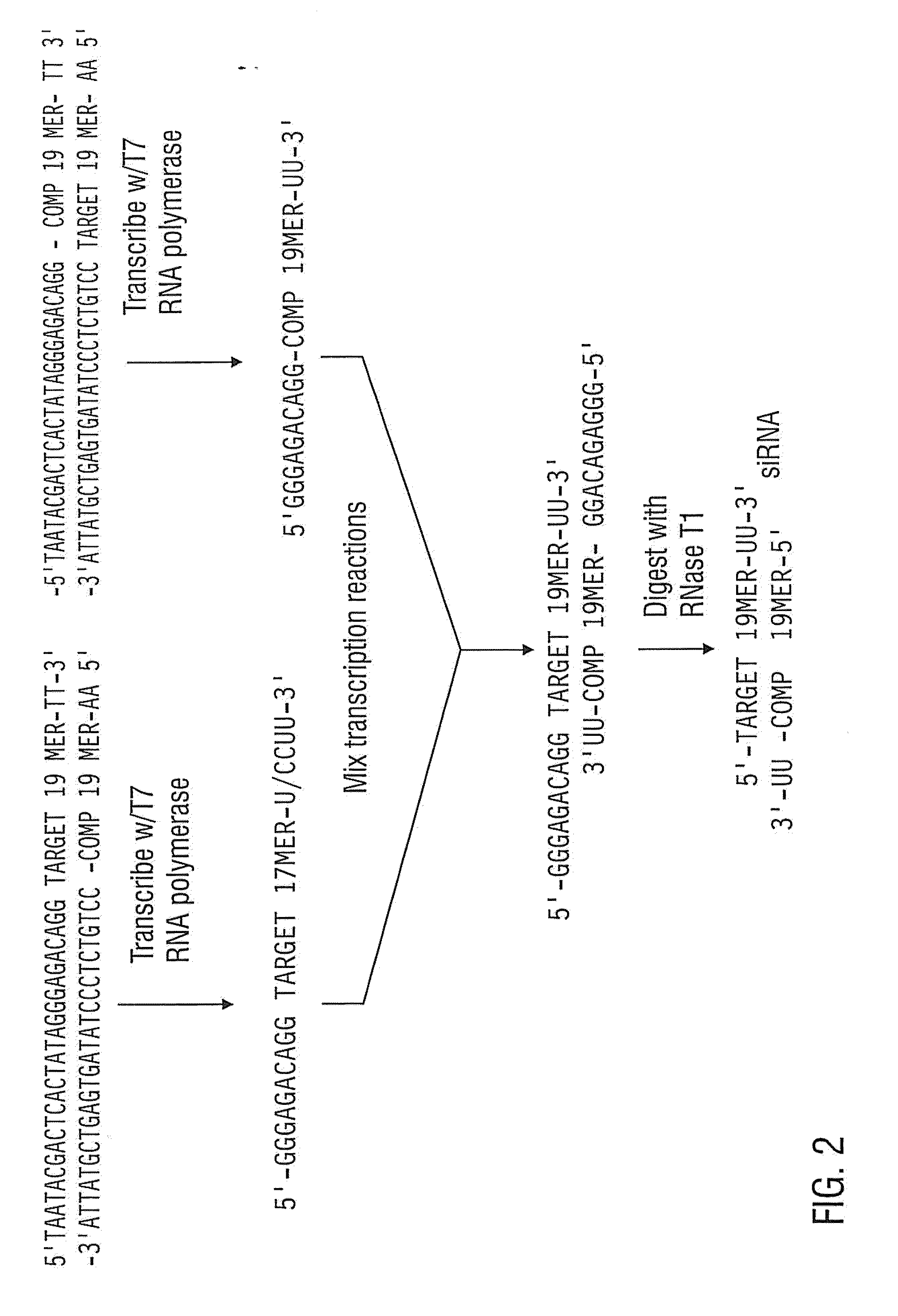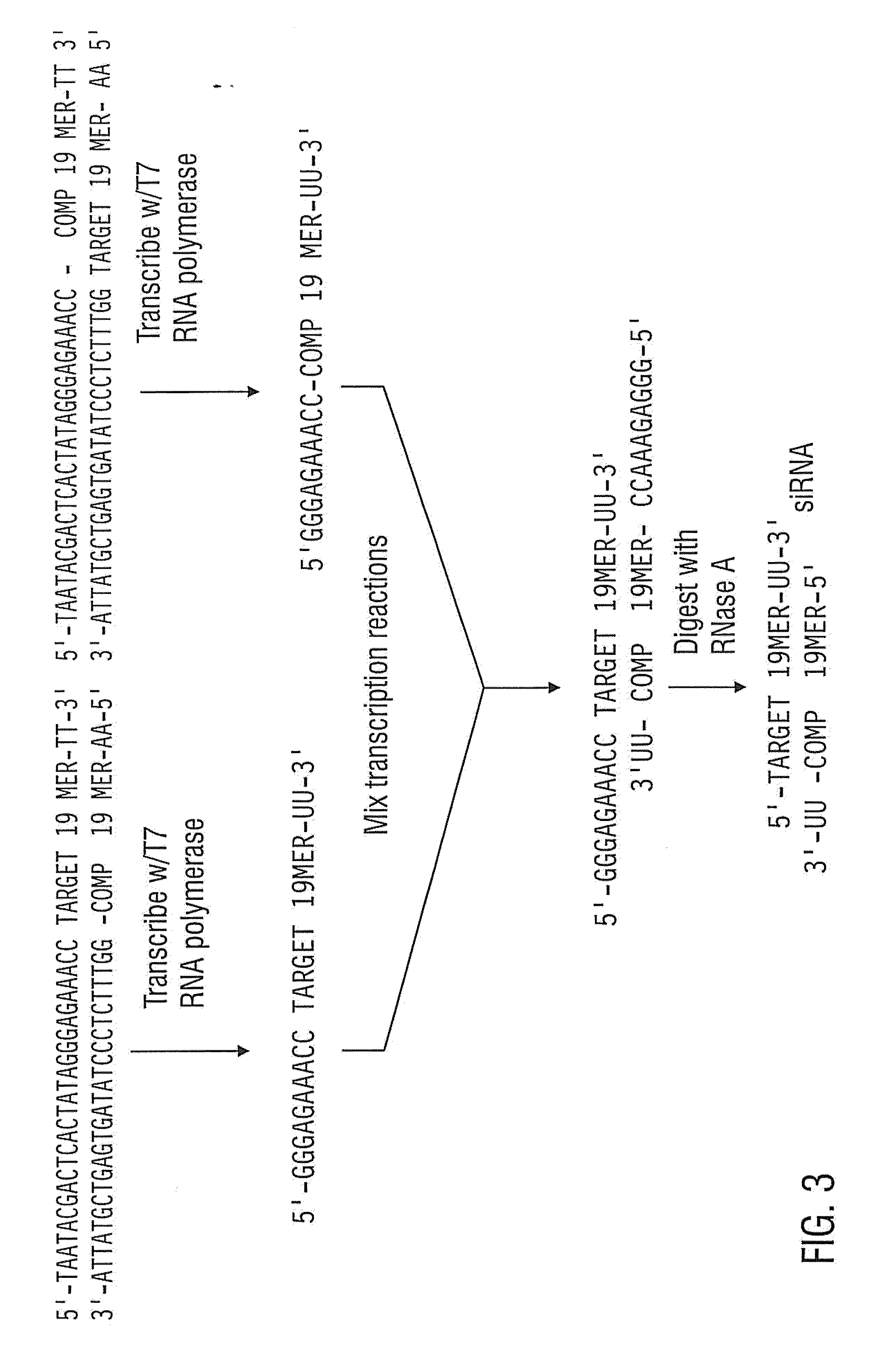HIGH POTENCY siRNAS FOR REDUCING THE EXPRESSION OF TARGET GENES
a target gene and high-potency technology, applied in the field of sirna, can solve the problems of inability to specifically suppress the expression of proteins in mammalian cells using the typical rnai molecule, the process is somewhat cumbersome and expensive, and the chemically synthesized ribo-oligomers are very expensive. , to achieve the effect of less costly sirna, increased potency, and suppressing gene expression
- Summary
- Abstract
- Description
- Claims
- Application Information
AI Technical Summary
Benefits of technology
Problems solved by technology
Method used
Image
Examples
example 1
Model Target Genes
[0159]C-myc and GAPDH were chosen to evaluate the impact of siRNA on the expression of genes in mammalian cells. The c-myc proto-oncogene can be a transcription repressor and activator and has important roles in cell death and cell cycle progression (reviewed in Ryan et al., 1996). GAPDH is the metabolic protein Glyceraldehyde-3-phosphate Dehydrogenase. It is involved in glycolysis. Reducing the expression of either gene slows the cell division rate, which can be tracked using the Alomar Blue assay described above or by quantifying the number of healthy cells. In addition, the abundance of the mRNA and protein from each gene can be calculated using standard techniques (RT-PCR, Northern analysis, immunofluorescence, or Western analysis).
example 2
SiRNA Target Site Selection
[0160]Four different double-stranded 21mer siRNAs were designed and prepared for both c-myc and GAPDH. These siRNAs were tested to determine which siRNA provided the greatest effect without affecting non-target genes.
c-myc siRNA Development
[0161]The siRNAs specific to different regions of the c-myc gene are listed in Table 1 (SEQ ID NOS: 3-10) and diagrammed in FIG. 5. Also shown are the locations of the start codon (start), stop codon (stop), coding region, 5′ and 3′ UTR's as well as the binding site of a well-characterized antisense oligonucleotide. The antisense oligonucleotide that we used has previously been shown to reduce c-myc expression (Kimura et al., 1995) and served as a positive control in our experiments.
[0162]1.5 nanomoles of the sense and anti-sense siRNAs were mixed in a solution comprising 100 mM KOAc, 30 mM HEPES-KOH pH 7.4, and 2 mM MgOAc. The solutions were incubated at 37° C. for one minute, then at room temperature for one hour. The ...
example 3
Potency of Chemical Versus Enzymatic Synthesis of siRNA-c-myc
[0174]The 3′ UTR siRNA described above was produced by in vitro transcription to compare the potency of siRNAs prepared by enzymatic means to siRNAs generated by chemical synthesis. The following synthetic DNA oligomers were purchased from Integrated DNA Technologies:
TABLE 4SEQ IDNameDNA Sequence (5′ to 3′)NO:T7 PromoterGGTAATACGACTCACTATAGGGAGACA30Primer:GG3′UTR sense:AATTTCTGTTAGAAGGAATCGCCTGTC31TC3′UTR antisense:AACGATTCCTTCTAACAGAAACCTGTC32TC
[0175]The T7 promoter primer was mixed with the 3′ UTR sense and antisense templates in separate reactions and converted to transcription templates. Templates for in vitro transcription may be double-stranded over the length of the promoter sequence (Milligan et al. 1987). Making the entire template double-stranded improves the transcription of siRNAs, therefore the following procedure is used to convert DNA oligonucleotides to transcription templates for siRNA synthesis.
[0176]The ...
PUM
| Property | Measurement | Unit |
|---|---|---|
| pH | aaaaa | aaaaa |
| pH | aaaaa | aaaaa |
| length | aaaaa | aaaaa |
Abstract
Description
Claims
Application Information
 Login to View More
Login to View More - R&D
- Intellectual Property
- Life Sciences
- Materials
- Tech Scout
- Unparalleled Data Quality
- Higher Quality Content
- 60% Fewer Hallucinations
Browse by: Latest US Patents, China's latest patents, Technical Efficacy Thesaurus, Application Domain, Technology Topic, Popular Technical Reports.
© 2025 PatSnap. All rights reserved.Legal|Privacy policy|Modern Slavery Act Transparency Statement|Sitemap|About US| Contact US: help@patsnap.com



